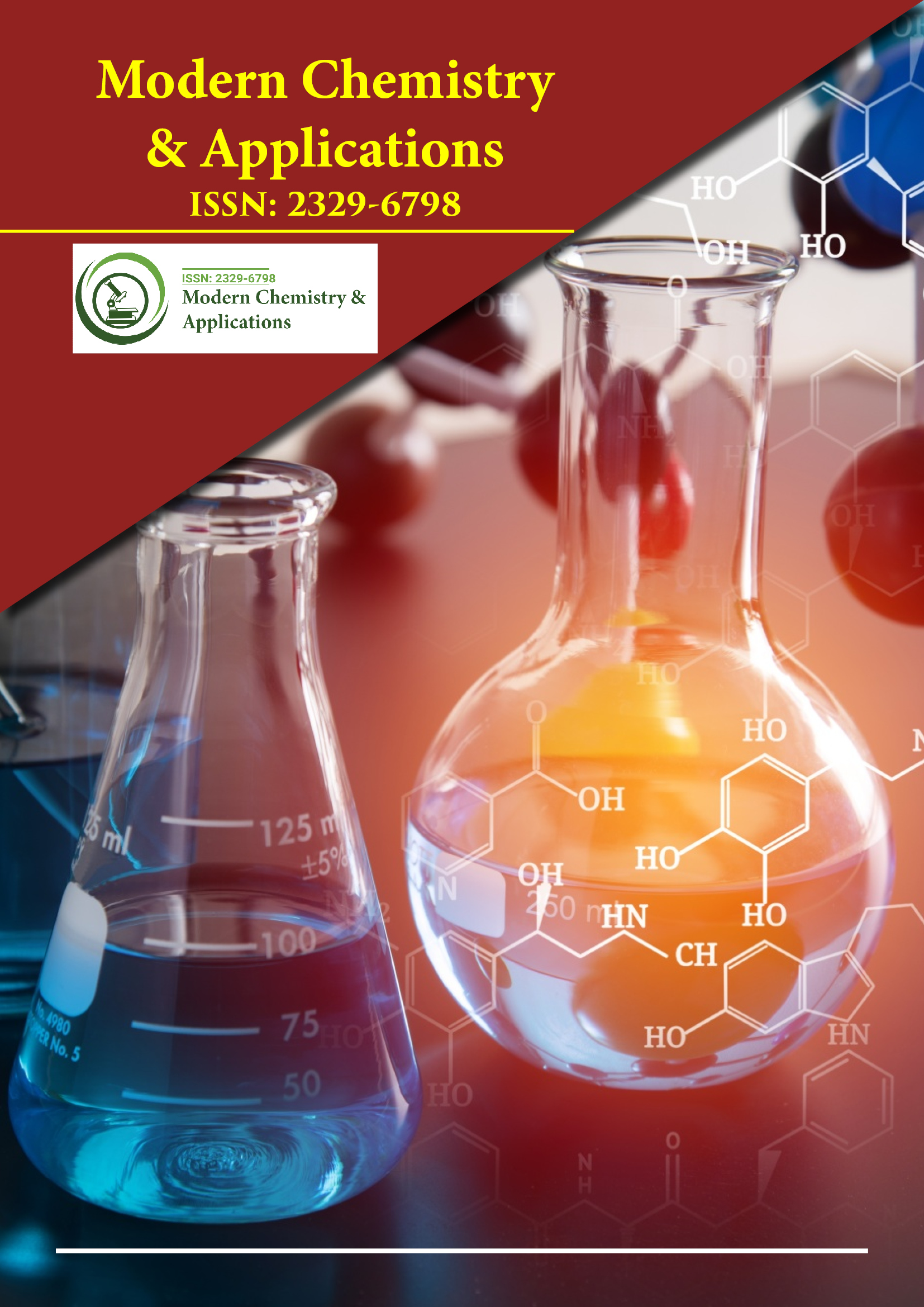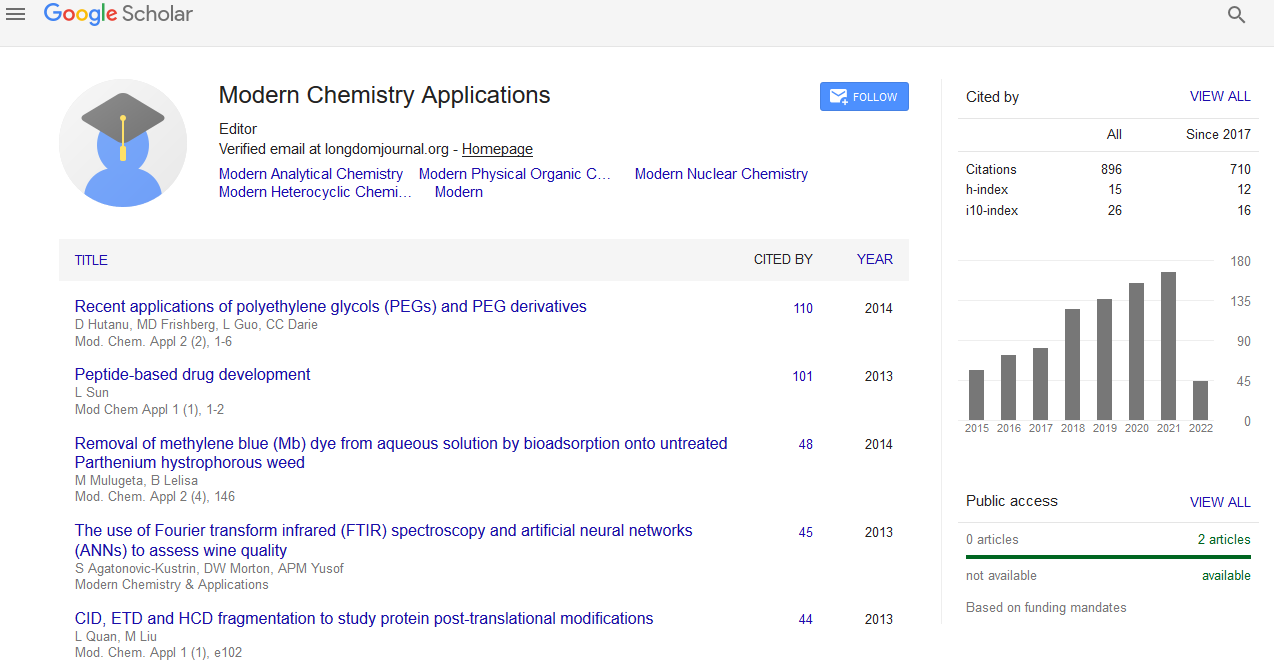Indexed In
- Open J Gate
- JournalTOCs
- RefSeek
- Hamdard University
- EBSCO A-Z
- OCLC- WorldCat
- Scholarsteer
- Publons
- Geneva Foundation for Medical Education and Research
- Google Scholar
Useful Links
Share This Page
Journal Flyer

Open Access Journals
- Agri and Aquaculture
- Biochemistry
- Bioinformatics & Systems Biology
- Business & Management
- Chemistry
- Clinical Sciences
- Engineering
- Food & Nutrition
- General Science
- Genetics & Molecular Biology
- Immunology & Microbiology
- Medical Sciences
- Neuroscience & Psychology
- Nursing & Health Care
- Pharmaceutical Sciences
Abstract
Study of Loading SO4 2- on Sb-SnO2 Nanocrystal and its Calcination Temperature to Make Solid Superacid SO4 ⊕/Sb-SnO2
Xuejun Zhang, Xiao-Ning Zhang, Qin-Qin Ran, Han-Mei Ouyang, Hui Zhong and Han Tao
SO4 2-/SnO2 were reported to be a solid superacid with an acid strength equal to that of SO4 2-/ZrO2. But papers concerning the SO4 2-/SnO2 catalyst have been quite few, because of difficulty in preparation of the oxide gels from its salts SnCl4. A highly dispersed light yellow powder, Sb-SnO2 nanocrystal, was obtained by the synthesis method of “P-CNAIE” and the drying method of “AD-IAA”. The Sb doping made the energy gap of nano-crystalline SnO2 narrower. A saturated solution of ammonium sulfate was dropped into organic solutions containing a fixed amount of Sb-SnO2 nano-powders in different ratio in order to load Sb-SnO2 powder with ammonium sulfate. This method has an outstanding advantage that is the loading ratio of (NH4)2SO4 to Sb-SnO2 can come to very high and no free water causes the aggregation of Sb-SnO2 nano powder. The methods of Differential Scanning Calorimetry (DSC) and Thermogravimetric analysis (TG) demonstrated that the working ratio of Sb-SnO2 to (NH4)2SO4 was 1:1.4 to 1:1.6 wt% and the most favorable calcination temperature for the generation of superficially sulfated groups of Sb-SnO2 particles should fall between 380°C and 400°C. The adsorption reaction of indicator reveals that the solid acid, calcined Sb- SnO2 with a bluish color had a H0 ≤ -14.5 at least.


